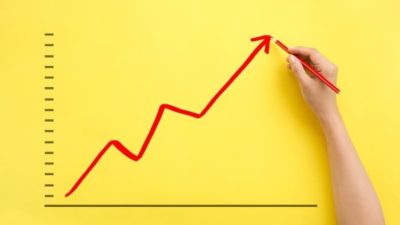Australia's greatest tech success story in software developer Atlassian (TEAM: NASDAQ) this morning reported what its own co-CEOs described as a "ripper" quarter ending December 31 2018.
The group has taken on an acquisitive business plan recently with significant deals to buy workplace messaging board Trello (largely for IT teams) and digital incident management system Opsgenie.
As a result of the acquisitions and the still strong performance of its core Jira and Confluence businesses it managed to grow quarterly revenue 29% to US$299 million and ended the quarter with total customers of 138,825.
Its operating loss narrowed to US$3.2 million compared to US$13 million in the prior corresponding quarter, with adjusted net operating income coming in at US$74.8 million.
The difference between the two is because Atlassian, like every other company, backs out costs such as share-based compensation and amortisation of acquired intangible assets when reporting adjusted income.
For the third quarter of FY 2019 it's targeting revenue between US$303 million to US$305 million, with net adjusted earnings per share of 18 cents.
Valuation
For the full year it's targeting revenue between US$1,195 million and US$1,199 million on adjusted earnings per share between 81 to 82 cents. This would place the stock on 113x estimated adjusted forward earnings per share based on a US$92 share price. It would also be on 18.4x estimated annual sales based on a market cap of US$22.1 billion.
Evidently investors are expecting a lot more profit growth from Atlassian thanks to its software-as-a-service business model that has potential to grow profits quickly on high margins over the long term.
I've written a fair bit about the rise of the software-as-a-service for investors to watch over 2018/19 and in particular how it appears to be re-writing the rules of conventional valuation as we see with Atlassian.
There are a few reasons for this covered in this article I wrote back in September on why SaaS shares going are gangbusters as investors in Australia wake up to the attractive economics of SaaS businesses over the long term.
Some professional analysts are also starting to think independently from traditional university or business school finance teachings on valuation to put lower discount rates on these stocks and hence increase their valuations.
This is because the recurring revenue model provides greater revenue and profit certainty over time that gives them more certainty over the present value of future cash flows. Consequently this turn present values higher as the future cash flows are discounted less for the risk they never materialise.
As such I flagged in the September article how the best SaaS stocks look worth owning such as Xero Limited (ASX: XRO), Nearmap Ltd (ASX: NEA) and Pro Medicus Limited (ASX: PME). All three of these stocks and several others have gone gangbusters on the ASX over the last few years and may have bright futures ahead.
However, please remember no stock is a buy at any price and the most highly-valued stocks are vulnerable to the biggest falls in the event of operational mishaps, while it's also easy to argue that some of the SaaS companies are over-valued on hype even if they do boast attractive business models.








